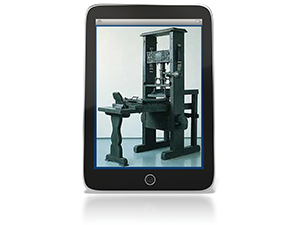
“To create consists of making new combinations. … The most fertile will often be those formed of elements drawn from domains which are far apart.” Henri Poincarể
In an environment where change is rapid, resources are relatively scarce customer demands are high, and the need for innovative thinking is critical. Novel problems require novel thinking to craft solutions. Resource constraints make it necessary to apply those solutions quickly and effectively. How can it be possible to leverage that kind of innovative thinking consistently?
One of the most powerful avenues to innovative thinking is through the adoption of a systems view. This means viewing the problem and its setting from a vantage point that allows the problem solver to take in the situation, the problem, and potential solutions all set in proper relationship in a coherent landscape.
The systems view can make what seems like disorganized chaos, when viewed from inside the problem, appear as the organized complexity it is. This view leads to understanding the context and relationships of problems to their environments. From a systems view trial solutions can be evaluated for their effect not only on the problem but in the broader context as well.
As Poincarể suggests that the broader the view, the “more fertile” are the creative the possibilities. If our view of the problem space and its context is narrow and limited, there are fewer possible combinations on which we may draw for ideas. An example of how Poincarể’s maxim works can be found in the creation of Gutenberg’s press.
Johannes Gutenberg’s mechanical movable type printing press is arguably the most revolutionary invention in history. Its impact on the course of civilization is unrivaled. Until Gutenberg’s innovation, books were either handwritten manuscripts or small editions of woodblock prints. This meant that they were both rare and expensive.
Gutenberg’s father worked in the ecclesiastical mint and Gutenberg grew up around metalwork – particularly casting. He understood the metallurgical issues in casting coins. In 1439 he developed the printing press using movable type – metal castings of individual letters (called “sorts”) that could be arranged in frames, locked in place, and inked. Pressed to paper, these castings produced a printed page. Gutenberg kept the type pieces aligned in the frame using alignment marks that revealed any misalignment to a visual inspection of the typeframe.
In order to uniformly and strongly press the inked type to the paper, Gutenberg used a press patterned on the agricultural presses (e.g.- the wine press) that used a screw mechanism to apply the pressure to the frame holding the type. This press could be tightened and loosened to print first one page and then another. He also pioneered the use of oil based inks which helped him make a strong, clear and relatively lasting image on the page.
To these physical innovations Gutenberg added a reorganization of the printer’s work. By dividing the tasks among a crew, he was able to gain an efficiency that easily exceeded the output of a lone printer working with a helper.
As we look at Gutenberg revolutionary innovation we see him drawing from a variety of disciplines and sciences. He combined the metallurgy of coin casting with the chemistry of inks and the strong even pressure generated by the screw-presses of the vintner. To that he added his own ideas for individual reusable type sorts, alignment markings, locking frames, and labor specialization. He drew all of these into his printing press and gave the world mass printing, which made the printed word less expensive and more accessible.
Without a view of his world that would recognize metallurgy and chemistry and wine-making, he would have been unable to leverage his ideas into the powerful whole that was his printing press. Trapped in a single discipline he might have developed a metal casting process that was advanced for its time or pioneered the use of oil-based inks. It was not until he looked beyond the narrow boundaries of specialized knowledge that he was able to revolutionize the world of knowledge. Truly, for Gutenberg the key to innovation was his systems view. The same remains true for us today.
When we take a systems view, we free ourselves from the bounds of the same old thinking. We need to take a page from Old Johannes’ book and not only get out of our box, but adopt a perch above the box where we can see the problems and solutions from a systems perspective. Only then will we have a chance to revolutionize our world!





